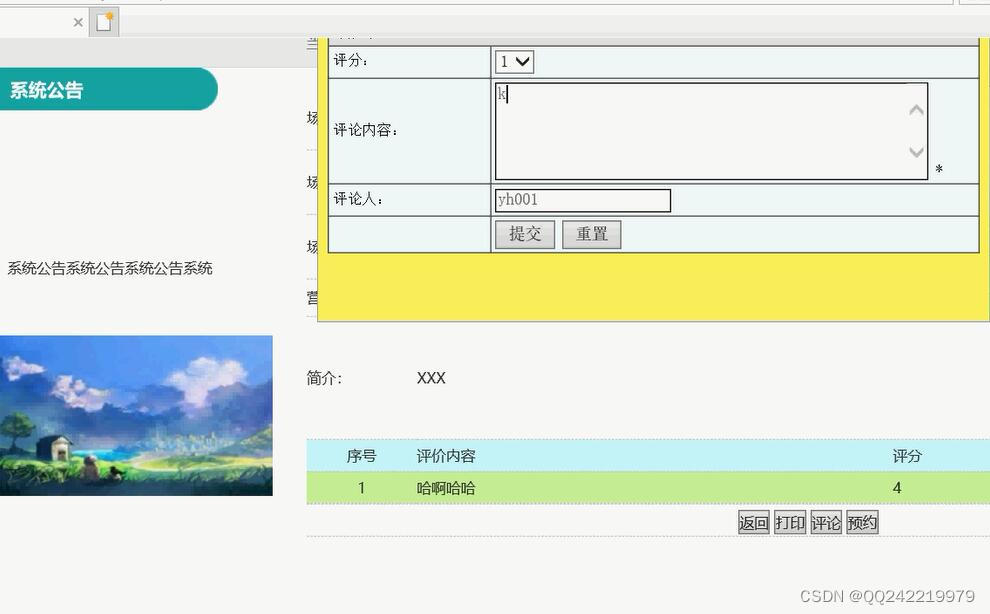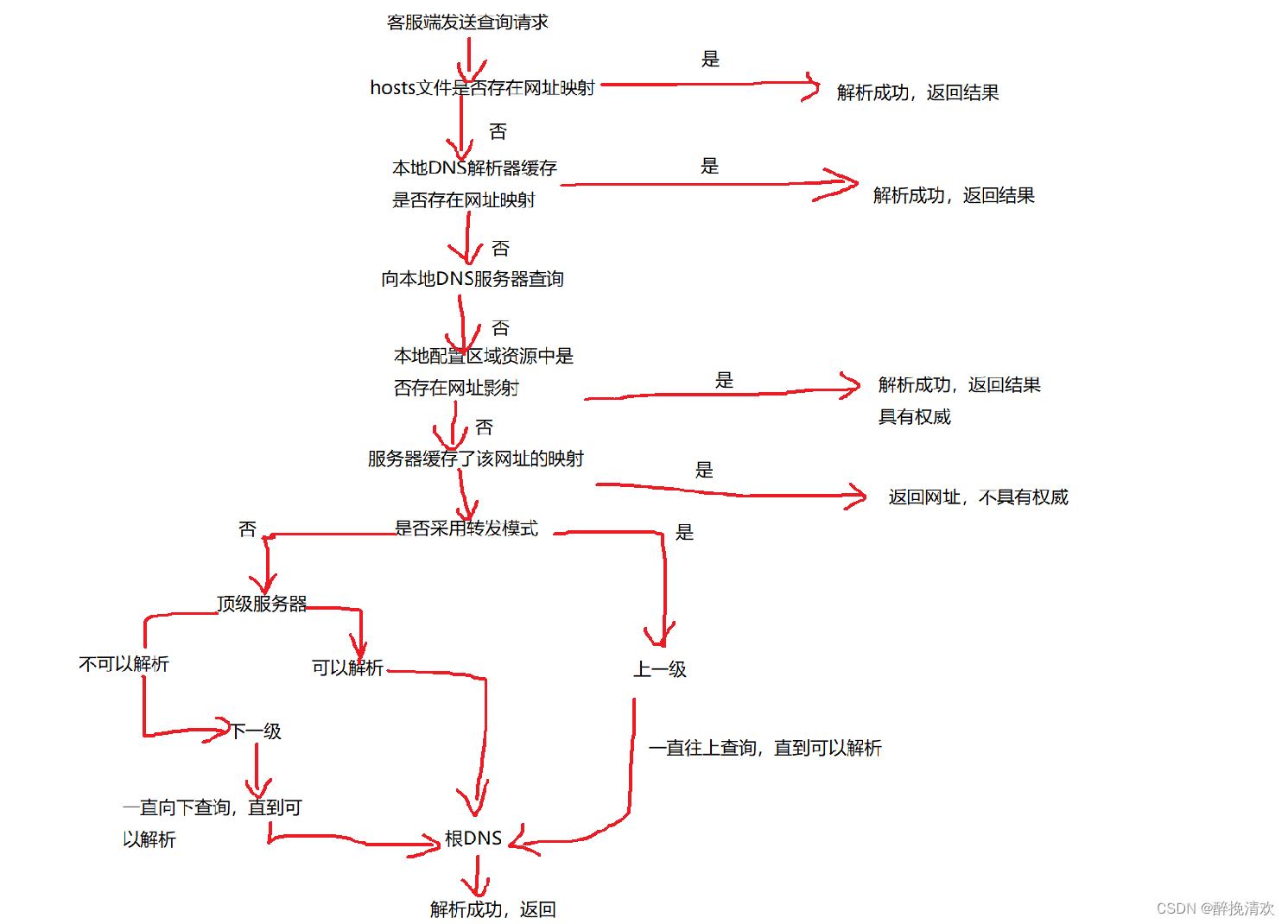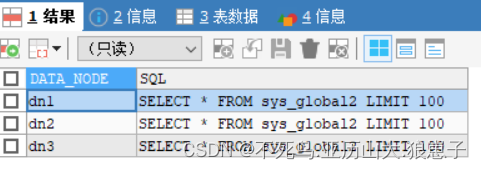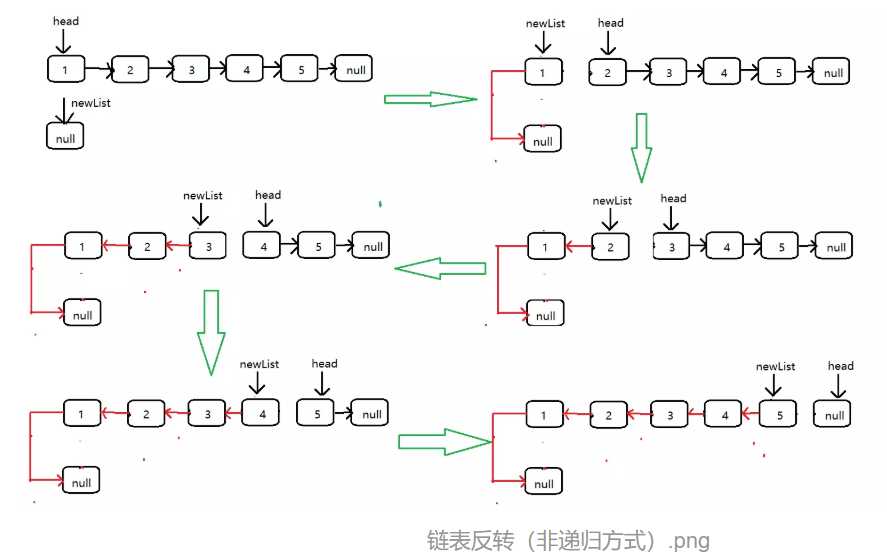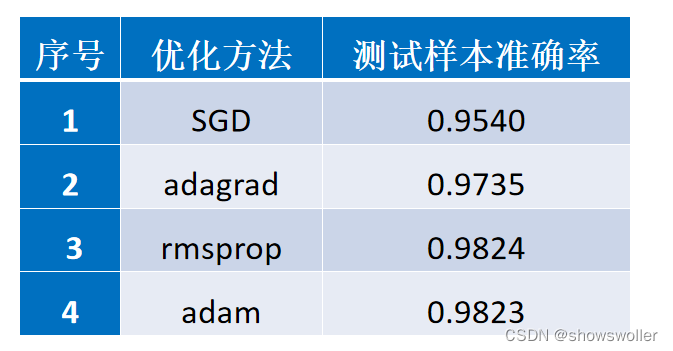本笔记基于B站UP主不良人编程
目录
1.权限的管理
1.1什么是权限管理
1.2什么是身份认证
1.3什么是授权
2.什么是Shiro
3.Shiro的核心架构
3.1 S核心内容
4.shiro中的认证4.1认证
4.2shiro中认证的关键对象
4.3认证流程
4.4认证程序开发流程
4.4认证程序源码
4.5自定义Realm
4.6使用DM5和Salt
5.shiro中的授权
5.1授权
5.2关键对象
5.3授权流程
5.4授权方式
5.5权限字符串
5.6 shiro中授权编程实现方式
5.7开发授权
6基于SpringBoot整合
6.1引入shiro依赖
6.2配置shiro环境
6.3MD5、Salt的认证实现
6.4shiro中授权编程实现方式-代码实现
6.5.shiro整合springboot之授权数据的数据库获取
6.8使用CacheManager1.Cache作用
2.使用shiro中默认EhCache实现缓存
6.9Shiro整合springboot缓存之Redis
1.权限的管理
1.1什么是权限管理
基本上涉及到用户参与的系统都要进行权限管理,权限管理属于系统安全的范畴,权限管理实现对用户访问系统的控制,按照安全规则或者安全策略 控制用户可以访问而且只能访问自己被授权的资源。
权限管理包括用户身份认证和授权两部分,简称认证授权。对于需要访问控制的资源用户首先经过身份认证,认证通过后用户具有该资源的访问权限方可访问。
1.2什么是身份认证
身份认证,就是判断一个用户是否为合法用户的处理过程。最常用的简单身份认证方式是系统通过核对用户输入的用户名和口令,看其是否与系统中存储的该用户的用户名和口令一致,来判断用户身份是否正确。对于采用指纹等系统,则出示
指纹;对于硬件Ky等刷卡系统,则需要刷卡。
1.3什么是授权
授权,即访问控制,控制谁能访问哪些资源。主体进行身份认证后需要分配权限方可访问系统的资源,对于某些资源没权限是无法访问的
2.什么是Shiro
Apache Shiro是一个功能强大且易于使用的 Java 安全框架,它执行身份验证、授权、加密和会话管理。使用 Shiro 易于理解的 APl,您可以快速而轻松地保护任何应用程序——从最小的移动应用程序到最大的 Web 和企业应用程序
3.Shiro的核心架构

3.1 S核心内容
Subject(用户):当前的操作用户 获取当前用户Subject currentUser = SecurityUtils.getSubject()
SecurityManager(安全管理器):Shiro的核心,负责与其他组件进行交互,实现 subject 委托的各种功能
Realms(数据源) :Realm会查找相关数据源,充当与安全管理间的桥梁,经过Realm找到数据源进行认证,授权等操作
Authenticator(认证器): 用于认证,从 Realm 数据源取得数据之后进行执行认证流程处理。
Authorizer(授权器):用户访问控制授权,决定用户是否拥有执行指定操作的权限。
SessionManager (会话管理器):支持会话管理
CacheManager (缓存管理器):用于缓存认证授权信息
Cryptography(加密组件):提供了加密解密的工具包
4.shiro中的认证
4.1认证
身份认证,就是判断一个用户是否为合法用户的处理过程。最常用的简单身份认证方式是系统通过核对用户输入的用户名和口令,看其是否与系统中存储的该用户的用户名和口令一致,来判断用户身份是否正确。
4.2shiro中认证的关键对象
Subject:主体
访问系统的用户,主体可以是用户、程序等,进行认证的都称为主体;
Principal:身份信息
是主体(subject)进行身份认证的标识,标识必须具有唯一性,如用户名、手机号、邮箱地址等,一个主体可以有多个身份,但是必须有一个主身份(PrimaryPrincipal)
“credential:凭证信息!
是只有主体自己知道的安全信息,如密码、证书等。
4.3认证流程

4.4认证程序开发流程
注意点:shiro配置文件
.ini结尾文件 .txt .ini复杂数据格式
shiro配置文件
[users]
hzw=123
zhangsan=123456
ryw=1233shiro所需依赖
<dependency>
<groupId>org.apache.shiro</groupId>
<artifactId>shiro-core</artifactId>
<version>1.3.2</version>
</dependency>package com.hzw.shiro;
import org.apache.shiro.SecurityUtils;
import org.apache.shiro.authc.AuthenticationException;
import org.apache.shiro.authc.IncorrectCredentialsException;
import org.apache.shiro.authc.UnknownAccountException;
import org.apache.shiro.authc.UsernamePasswordToken;
import org.apache.shiro.mgt.DefaultSecurityManager;
import org.apache.shiro.mgt.SecurityManager;
import org.apache.shiro.realm.text.IniRealm;
import org.apache.shiro.subject.Subject;
public class Authenticator {
public static void main(String[] args) {
//1.创建安全管理器对象 ctrl +h 看结构图
DefaultSecurityManager securityManager=new DefaultSecurityManager();
//2.安全管理系设置 Realm
securityManager.setRealm(new IniRealm("classpath:shiro.ini"));
//3.SecurityUtils 全局安全工具类设置安全管理器
SecurityUtils.setSecurityManager(securityManager);
//4.Subject:主体
Subject subject = SecurityUtils.getSubject();
//5.创建令牌
UsernamePasswordToken token = new UsernamePasswordToken("hzw", "123");
try {
System.out.println("认证状态"+subject.isAuthenticated());
//登录
subject.login(token);
System.out.println("认证状态"+subject.isAuthenticated());
//退出登录
subject.logout();
System.out.println("认证状态"+subject.isAuthenticated());
} catch ( UnknownAccountException e) {
e.printStackTrace();
System.out.println("用户名不存在");
}catch (IncorrectCredentialsException e){
e.printStackTrace();
System.out.println("密码错误");
}
}
}
测试结果

4.4认证程序源码

认证:
1.最终执行用户名比较SimpleAccountRealm
doGetAuthenticationInfo在这个方法中完成用户名校验
2.最终密码校验是在AuthenticatingRealm中
assertCredentialsMatch
总结
AuthenticatingRealm 认证realm doGetAuthenticationInfo
AuthorizingRealm 授权realm doGetAuthorizationInfo
4.5自定义Realm
实现代码
自定义Realm
package com.hzw.shiro.realm;
import org.apache.shiro.authc.AuthenticationException;
import org.apache.shiro.authc.AuthenticationInfo;
import org.apache.shiro.authc.AuthenticationToken;
import org.apache.shiro.authc.SimpleAuthenticationInfo;
import org.apache.shiro.authz.AuthorizationInfo;
import org.apache.shiro.realm.AuthorizingRealm;
import org.apache.shiro.subject.PrincipalCollection;
//自定义realm实现将认证/授权数据的来源转为数据库的实现
public class CustomerRealm extends AuthorizingRealm {
@Override
protected AuthorizationInfo doGetAuthorizationInfo(PrincipalCollection principalCollection) {
return null;
}
@Override
protected AuthenticationInfo doGetAuthenticationInfo(AuthenticationToken token) throws AuthenticationException {
//token获取用户名
String principal = (String) token.getPrincipal();
System.out.println(principal);
//判断
if ("hzw".equals(principal)){
//
SimpleAuthenticationInfo simpleAuthenticationInfo = new SimpleAuthenticationInfo(principal, "123", this.getName());
return simpleAuthenticationInfo;
}
return null;
}
}
测试代码
package com.hzw.shiro.realm;
import org.apache.shiro.SecurityUtils;
import org.apache.shiro.authc.IncorrectCredentialsException;
import org.apache.shiro.authc.UnknownAccountException;
import org.apache.shiro.authc.UsernamePasswordToken;
import org.apache.shiro.mgt.DefaultSecurityManager;
import org.apache.shiro.realm.text.IniRealm;
import org.apache.shiro.subject.Subject;
public class RealmTest {
public static void main(String[] args) {
//1.创建安全管理器对象 ctrl +h 看结构图
DefaultSecurityManager securityManager=new DefaultSecurityManager();
//2.安全管理系设置 Realm
// securityManager.setRealm(new IniRealm("classpath:shiro.ini"));
//2.自定义Realm
securityManager.setRealm(new CustomerRealm());
//3.SecurityUtils 全局安全工具类设置安全管理器
SecurityUtils.setSecurityManager(securityManager);
//4.Subject:主体
Subject subject = SecurityUtils.getSubject();
//5创建令牌
UsernamePasswordToken token = new UsernamePasswordToken("hzw", "123");
try {
//登录
subject.login(token);
System.out.println("认证状态"+subject.isAuthenticated());
} catch ( UnknownAccountException e) {
e.printStackTrace();
System.out.println("用户名不存在");
}catch (IncorrectCredentialsException e){
e.printStackTrace();
System.out.println("密码错误");
}
}
}
4.6使用DM5和Salt
实际应用是将盐和散列后的值存在数据库中,自动realm从数据库取出盐和加密后的值由shr©完成密码校验。

依赖
<dependency>
<groupId>org.apache.shiro</groupId>
<artifactId>shiro-core</artifactId>
<version>1.3.2</version>
</dependency>MD5、salt、hash密文
package com.hzw.shiro;
import org.apache.shiro.crypto.hash.Md5Hash;
public class Md5Test {
public static void main(String[] args) {
//使用md5
Md5Hash md5Hash =new Md5Hash("123");
System.out.println(md5Hash.toHex());
//使用MD5+sa1t处理
Md5Hash md5Hash1 = new Md5Hash("123","XO*7ps");
System.out.println(md5Hash1.toHex());
//使用md5+sa1t+hash散列
Md5Hash md5Hash2 =new Md5Hash("123","XO*7ps",1024);
System.out.println(md5Hash2.toHex());
}
}

获取加密后的密码,接下来测试md5、md5+salt、md5+salt+hash
package com.hzw.shiro.realm;
import org.apache.shiro.authc.AuthenticationException;
import org.apache.shiro.authc.AuthenticationInfo;
import org.apache.shiro.authc.AuthenticationToken;
import org.apache.shiro.authc.SimpleAuthenticationInfo;
import org.apache.shiro.authz.AuthorizationInfo;
import org.apache.shiro.realm.AuthorizingRealm;
import org.apache.shiro.subject.PrincipalCollection;
import org.apache.shiro.util.ByteSource;
import javax.annotation.Resource;
public class CustomerMd5Realm extends AuthorizingRealm {
@Override
protected AuthorizationInfo doGetAuthorizationInfo(PrincipalCollection principalCollection) {
return null;
}
@Override
protected AuthenticationInfo doGetAuthenticationInfo(AuthenticationToken token) throws AuthenticationException {
//获取身份信息
String principal = (String) token.getPrincipal();
//根据用户名
if ("hzw".equals(principal)) {
//
return new SimpleAuthenticationInfo(
principal,
"202cb962ac59075b964b07152d234b70",
// ByteSource.Util.bytes("XO*7ps"), //+salt 密文
this.getName());
}
return null;
}
}
自定义Realm
package com.hzw.shiro;
import com.hzw.shiro.realm.CustomerMd5Realm;
import com.hzw.shiro.realm.CustomerRealm;
import org.apache.shiro.SecurityUtils;
import org.apache.shiro.authc.IncorrectCredentialsException;
import org.apache.shiro.authc.UnknownAccountException;
import org.apache.shiro.authc.UsernamePasswordToken;
import org.apache.shiro.authc.credential.HashedCredentialsMatcher;
import org.apache.shiro.mgt.DefaultSecurityManager;
import org.apache.shiro.subject.Subject;
public class MD5Authenit {
public static void main(String[] args) {
//1.创建安全管理器对象 ctrl +h 看结构图
DefaultSecurityManager securityManager=new DefaultSecurityManager();
//2.自定义Realm
CustomerMd5Realm md5Realm = new CustomerMd5Realm();
//设置realm 使用hash凭借匹配器
HashedCredentialsMatcher credentialsMatcher = new HashedCredentialsMatcher();
//使用算法
credentialsMatcher.setHashAlgorithmName("md5");
//hash列
// credentialsMatcher.setHashIterations(1024);
//set进去
md5Realm.setCredentialsMatcher(credentialsMatcher);
securityManager.setRealm(md5Realm);
//3.SecurityUtils 全局安全工具类设置安全管理器
SecurityUtils.setSecurityManager(securityManager);
//4.Subject:主体
Subject subject = SecurityUtils.getSubject();
//5创建令牌
UsernamePasswordToken token = new UsernamePasswordToken("hzw", "123");
try {
//登录
subject.login(token);
System.out.println("登录成功");
} catch ( UnknownAccountException e) {
e.printStackTrace();
System.out.println("用户名不存在");
}catch (IncorrectCredentialsException e){
e.printStackTrace();
System.out.println("密码错误");
}
}
}
测试md5

5.shiro中的授权
5.1授权
授权,即访问控制,控制谁能访问哪些资源。主体进行身份认证后需要分配权限方可访问系统的资源,对于某些资源没
有权限是无法访问的。
5.2关键对象
授权可简单理解为who对what(which)进行How操作:
Who,即主体(Subject),主体需要访问系统中的资源。
What,即资源(Resource),如系统菜单、页面、按钮、类方法、系统商品信息等。资源包括资源类型和资源实例,比如商品信息为资源类型,类型为t01的商品为资源实例,编号为001的商品信息也属于资源实例。
HoW,权限/许可(Permission),规定了主体对资源的操作许可,权限离开资源没有意义,如用户查询权限、用户添加权限、某个类方法的调用权限、编号为001用户的修改权限等,通过权限可知主体对哪些资源都有哪些操作许可。
5.3授权流程

5.4授权方式

5.5权限字符串
权限字符串的规则是:资源标识符:操作:资源实例标识符,意思是对哪个资源的哪个实例具有什么操作,“:”是资源/操作/实例的分割符,权限字符串也可以使用通配符。
例子:
·用户创建权限:user:create,或user:create:*
·用户修改实例001的权限:user:update:001
·用户实例001的所有权限:user:*:001
5.6 shiro中授权编程实现方式

5.7开发授权
//shiro所需依赖
<dependency>
<groupId>org.apache.shiro</groupId>
<artifactId>shiro-core</artifactId>
<version>1.3.2</version>
</dependency>//自定义realm
package com.hzw.shiro.realm;
import org.apache.shiro.authc.AuthenticationException;
import org.apache.shiro.authc.AuthenticationInfo;
import org.apache.shiro.authc.AuthenticationToken;
import org.apache.shiro.authc.SimpleAuthenticationInfo;
import org.apache.shiro.authz.AuthorizationInfo;
import org.apache.shiro.authz.SimpleAuthorizationInfo;
import org.apache.shiro.realm.AuthorizingRealm;
import org.apache.shiro.subject.PrincipalCollection;
import org.apache.shiro.util.ByteSource;
import javax.annotation.Resource;
public class CustomerMd5Realm extends AuthorizingRealm {
//授权
@Override
protected AuthorizationInfo doGetAuthorizationInfo(PrincipalCollection principals) {
String principal = (String) principals.getPrimaryPrincipal();
System.out.println("身份信息"+principal);
//根据身份信息 用户名 获取当前用户的角色信息, 以及权限信息 xiaoehen admin user
SimpleAuthorizationInfo simpleAuthorizationInfo = new SimpleAuthorizationInfo();
//将数据库查询角色信息赋值给权限对象
simpleAuthorizationInfo.addRole("admin");
simpleAuthorizationInfo.addRole("user");
//将数据库中查询权限信息赋值给权限对象
simpleAuthorizationInfo.addStringPermission("user:*:01");
simpleAuthorizationInfo.addStringPermission("produce:create");
return simpleAuthorizationInfo;
}
//认证
@Override
protected AuthenticationInfo doGetAuthenticationInfo(AuthenticationToken token) throws AuthenticationException {
//获取身份信息
String principal = (String) token.getPrincipal();
//根据用户名
if ("hzw".equals(principal)) {
//参数1:数据库用户名参数2:数据库md5+salt之后的密码参数3:注册时的随机盐参数4:realm的名字
return new SimpleAuthenticationInfo(
principal,
"908da6d8e6057542323d9f58de42f9ab",
ByteSource.Util.bytes("XO*7ps"), //+salt 密文
this.getName());
}
return null;
}
}
//
package com.hzw.shiro;
import com.hzw.shiro.realm.CustomerMd5Realm;
import com.hzw.shiro.realm.CustomerRealm;
import org.apache.shiro.SecurityUtils;
import org.apache.shiro.authc.IncorrectCredentialsException;
import org.apache.shiro.authc.UnknownAccountException;
import org.apache.shiro.authc.UsernamePasswordToken;
import org.apache.shiro.authc.credential.HashedCredentialsMatcher;
import org.apache.shiro.mgt.DefaultSecurityManager;
import org.apache.shiro.subject.Subject;
import java.util.Arrays;
public class MD5Authenit {
public static void main(String[] args) {
//1.创建安全管理器对象 ctrl +h 看结构图
DefaultSecurityManager securityManager=new DefaultSecurityManager();
//2.自定义Realm
CustomerMd5Realm md5Realm = new CustomerMd5Realm();
//设置realm 使用hash凭借匹配器
HashedCredentialsMatcher credentialsMatcher = new HashedCredentialsMatcher();
//使用算法
credentialsMatcher.setHashAlgorithmName("md5");
//hash列
credentialsMatcher.setHashIterations(1024);
//set进去
md5Realm.setCredentialsMatcher(credentialsMatcher);
securityManager.setRealm(md5Realm);
//3.SecurityUtils 全局安全工具类设置安全管理器
SecurityUtils.setSecurityManager(securityManager);
//4.Subject:主体
Subject subject = SecurityUtils.getSubject();
//5创建令牌
UsernamePasswordToken token = new UsernamePasswordToken("hzw", "123");
try {
//登录
subject.login(token);
System.out.println("登录成功");
} catch ( UnknownAccountException e) {
e.printStackTrace();
System.out.println("用户名不存在");
}catch (IncorrectCredentialsException e){
e.printStackTrace();
System.out.println("密码错误");
}
if (subject.isAuthenticated()){
//基于角色权限控制
System.out.println("====单角色====");
System.out.println(subject.hasRole("admin"));
System.out.println("====多角色====");
//基于多角色权限控制
System.out.println(subject.hasAllRoles(Arrays.asList("admin", "user")));
System.out.println("====是否具有其中一个角色====");
//是否具有其中一个角色
boolean[] booleans= subject.hasRoles(Arrays.asList("admin","super","user"));
for (boolean aBoolean : booleans) {
System.out.println(aBoolean);
}
}
System.out.println("======权限信息");
//基于权限字符串的访问控制,资源标识符:操作:资源类型
System.out.println("权限:"+subject.isPermitted("user:*:01"));
System.out.println("权限:"+subject.isPermitted("produce:create:01"));
//分别具有哪些权限
boolean[] permitted = subject.isPermitted("user:*:01", "user:*:04");
for (boolean b : permitted) {
System.out.println(b);
}
//同时具有哪些权限
System.out.println("===同时具有哪些权限===");
boolean permittedAll = subject.isPermittedAll("user:*:01", "produce:create:01");
System.out.println(permittedAll);
}
}
6基于SpringBoot整合
整合思路

创建springboot项目
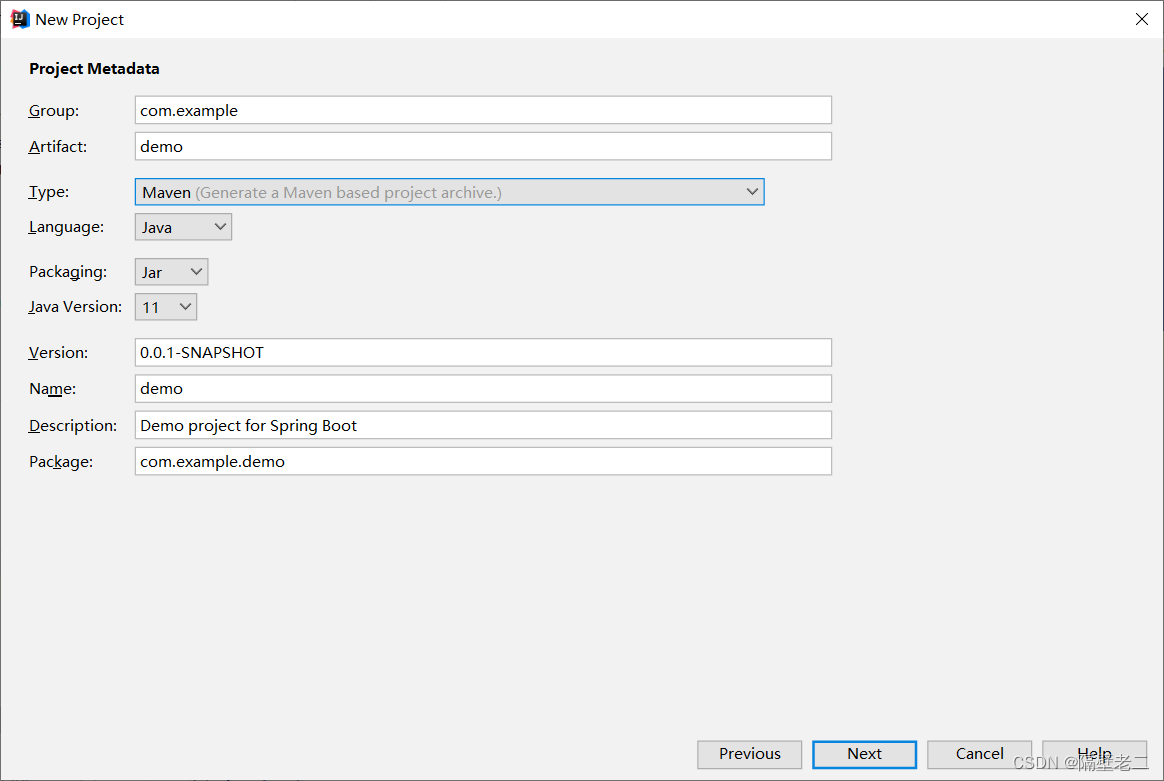

6.1引入shiro依赖
<!--引入jsp解析-->
<dependency>
<groupId>jstl</groupId>
<artifactId>jstl</artifactId>
<version>1.2</version>
</dependency>
<dependency>
<groupId>org.apache.tomcat.embed</groupId>
<artifactId>tomcat-embed-jasper</artifactId>
</dependency>
<!--引入shiro整合springboot依赖-->
<dependency>
<groupId>org.apache.shiro</groupId>
<artifactId>shiro-spring-boot-web-starter</artifactId>
<version>1.5.3</version>
</dependency>6.2配置shiro环境
1.创建shiro配置类
1.1配置ShiroFilterFactoryBean
1.2配置DefaultWebSecurityManager
1.4自定义Realm
package com.hzw.config;
import com.hzw.shiro.CustomerRealm;
import org.apache.shiro.realm.Realm;
import org.apache.shiro.spring.web.ShiroFilterFactoryBean;
import org.apache.shiro.web.mgt.DefaultWebSecurityManager;
import org.springframework.context.annotation.Bean;
import org.springframework.context.annotation.Configuration;
import java.util.HashMap;
@Configuration
public class ShiroConfig {
//1.创建shiroFilter所有拦截请求
@Bean(name = "shiroFilterFactoryBean")
public ShiroFilterFactoryBean getShiroFilterFactoryBean(DefaultWebSecurityManager defaultWebSecurityManager){
ShiroFilterFactoryBean shiroFilterFactoryBean = new ShiroFilterFactoryBean();
//给filter设置安全管理器
shiroFilterFactoryBean.setSecurityManager(defaultWebSecurityManager);
//配置系统受限资源
//配置系统公共资源
HashMap<String, String> map = new HashMap<>();
map.put("/index.jsp","authc"); //authc 请求这个资源要认证和授权
//默认认证界面路径
shiroFilterFactoryBean.setLoginUrl("/login.jsp");
shiroFilterFactoryBean.setFilterChainDefinitionMap(map);
return shiroFilterFactoryBean;
}
//2.创建安全管理器
@Bean
public DefaultWebSecurityManager getDefaultWebSecurityManager(Realm realm){
DefaultWebSecurityManager defaultWebSecurityManager = new DefaultWebSecurityManager();
//给安全管理器设置
defaultWebSecurityManager.setRealm(realm);
return defaultWebSecurityManager;
}
//3.创建自定义realm
@Bean
public Realm realm(){
CustomerRealm customerRealm = new CustomerRealm();
return customerRealm;
}
}
1.3创建自定义shiro
package com.hzw.shiro;
import org.apache.shiro.authc.AuthenticationException;
import org.apache.shiro.authc.AuthenticationInfo;
import org.apache.shiro.authc.AuthenticationToken;
import org.apache.shiro.authc.SimpleAuthenticationInfo;
import org.apache.shiro.authz.AuthorizationInfo;
import org.apache.shiro.realm.AuthorizingRealm;
import org.apache.shiro.subject.PrincipalCollection;
public class CustomerRealm extends AuthorizingRealm {
@Override
protected AuthorizationInfo doGetAuthorizationInfo(PrincipalCollection principalCollection) {
return null;
}
@Override
protected AuthenticationInfo doGetAuthenticationInfo(AuthenticationToken token) throws AuthenticationException {
System.out.println("================");
String principal = (String)token.getPrincipal();
if ("hzw".equals(principal)){
return new SimpleAuthenticationInfo(principal,"123",this.getName());
}
return null;
}
}
1.5编写控制器跳转至index.html
package com.hzw.controller;
import org.apache.shiro.SecurityUtils;
import org.apache.shiro.authc.IncorrectCredentialsException;
import org.apache.shiro.authc.UnknownAccountException;
import org.apache.shiro.authc.UsernamePasswordToken;
import org.apache.shiro.subject.Subject;
import org.springframework.stereotype.Controller;
import org.springframework.web.bind.annotation.RequestMapping;
@Controller
@RequestMapping("/user")
public class UserController {
@RequestMapping("/logout")
public String logout(){
Subject subject = SecurityUtils.getSubject();
subject.logout();
return "redirect:/login.jsp";
}
/**
* 处理身份认证
* @param username
* @param password
* @return
*/
@RequestMapping("/login")
public String login(String username,String password){
//获取主题对象
Subject subject = SecurityUtils.getSubject();
try {
subject.login(new UsernamePasswordToken(username,password));
return "redirect:/index.jsp";
}catch (UnknownAccountException e){
e.getStackTrace();
System.out.println("用户名错误");
}catch (IncorrectCredentialsException e){
e.getStackTrace();
System.out.println("密码错误");
}
return "redirect:/login.jsp";
}
}
index.jsp
<%@page contentType="text/html; UTF-8" pageEncoding="UTF-8" isELIgnored="false" %>
<!doctype html>
<head>
<meta charset="UTF-8">
<meta name="viewport"
content="width=device-width, user-scalable=no, initial-scale=1.0, maximum-scale=1.0, minimum-scale=1.0">
<meta http-equiv="X-UA-Compatible" content="ie=edge">
<title>首页</title>
</head>
<body>
<h1>系统主页</h1>
<a href="${pageContext.request.contextPath}/user/login">退出登录</a>
<ul style="list-style: none">
<li><a href="">用户管理</a></li>
<li><a href="">商品管理</a></li>
<li><a href="">订单管理</a></li>
<li><a href="">物流管理</a></li>
</ul>
</body>
</html>login.jsp
<%@ page contentType="text/html;charset=UTF-8" language="java" %>
<html>
<head>
<title>登录</title>
</head>
<body>
<h2>VIP用户登录</h2>
<form action="${pageContext.request.contextPath}/user/logout" method="post">
用户名:<input type="text" name="username"><br/>
密码:<input type="text" name="password"><br/>
<input type="submit" value="登录">
</form>
</body>
</html>
1.6启动测试
登录 输入正确密码 跳转到index.jsp


1.7加入权限控制
package com.hzw.config;
import com.hzw.shiro.CustomerRealm;
import org.apache.shiro.realm.Realm;
import org.apache.shiro.spring.web.ShiroFilterFactoryBean;
import org.apache.shiro.web.mgt.DefaultWebSecurityManager;
import org.springframework.context.annotation.Bean;
import org.springframework.context.annotation.Configuration;
import java.util.HashMap;
@Configuration
public class ShiroConfig {
//1.创建shiroFilter所有拦截请求
@Bean(name = "shiroFilterFactoryBean")
public ShiroFilterFactoryBean getShiroFilterFactoryBean(DefaultWebSecurityManager defaultWebSecurityManager){
ShiroFilterFactoryBean shiroFilterFactoryBean = new ShiroFilterFactoryBean();
//给filter设置安全管理器
shiroFilterFactoryBean.setSecurityManager(defaultWebSecurityManager);
HashMap<String, String> map = new HashMap<>();
//配置系统公共资源
map.put("/user/login","anon");
//配置系统受限资源
map.put("/**","authc"); //authc 请求这个资源要认证和授权
//默认认证界面路径
shiroFilterFactoryBean.setLoginUrl("/login.jsp");
shiroFilterFactoryBean.setFilterChainDefinitionMap(map);
return shiroFilterFactoryBean;
}
//2.创建安全管理器
@Bean
public DefaultWebSecurityManager getDefaultWebSecurityManager(Realm realm){
DefaultWebSecurityManager defaultWebSecurityManager = new DefaultWebSecurityManager();
//给安全管理器设置
defaultWebSecurityManager.setRealm(realm);
return defaultWebSecurityManager;
}
//3.创建自定义realm
@Bean
public Realm realm(){
CustomerRealm customerRealm = new CustomerRealm();
return customerRealm;
}
}
6.4常见过滤器

6.3MD5、Salt的认证实现
1.开发数据库注册
0 开发注册界面
<%@ page contentType="text/html;charset=UTF-8" language="java" %>
<html>
<head>
<title>Title</title>
</head>
<body>
<h1>用户注册</h1>
<form action="${pageContext.request.contextPath}/user/register" method="post">
用户名:<input type="text" name="username"><br/>
密码: <input type="text" name="password" ><br/>
<input type="submit" value="用户注册">
</form>
</body>
</html>
1.创建数据库表结构

2.引入依赖
<!--引入jsp解析-->
<dependency>
<groupId>jstl</groupId>
<artifactId>jstl</artifactId>
<version>1.2</version>
</dependency>
<dependency>
<groupId>org.apache.tomcat.embed</groupId>
<artifactId>tomcat-embed-jasper</artifactId>
</dependency>
<!--引入shiro整合springboot依赖-->
<dependency>
<groupId>org.apache.shiro</groupId>
<artifactId>shiro-spring-boot-web-starter</artifactId>
<version>1.5.3</version>
</dependency>
<!--mybatis-->
<dependency>
<groupId>org.mybatis.spring.boot</groupId>
<artifactId>mybatis-spring-boot-starter</artifactId>
<version>2.1.1</version>
</dependency>
<!--mysql-->
<dependency>
<groupId>mysql</groupId>
<artifactId>mysql-connector-java</artifactId>
<version>8.0.17</version>
</dependency>
<!--druid-->
<dependency>
<groupId>com.alibaba</groupId>
<artifactId>druid</artifactId>
<version>1.1.16</version>
</dependency>
3.配置application.properties配置文件
server.port=8888
server.servlet.context-path=/shiro
spring.application.name=shiro
spring.mvc.view.prefix=/
spring.mvc.view.suffix=.jsp
spring.datasource.type=com.alibaba.druid.pool.DruidDataSource
spring.datasource.driver-class-name=com.mysql.cj.jdbc.Driver
spring.datasource.url=jdbc:mysql://localhost:3306/shiro?useSSL=false&serverTimezone=Asia/Shanghai
spring.datasource.username=root
spring.datasource.password=root
mybatis.type-aliases-package=com.hzw.entry
mybatis.mapper-locations=classpath:com/hzw/mapper/*.xml
logging.level.com.hzw.dao=debug
4.创建entry
import lombok.AllArgsConstructor;
import lombok.Data;
import lombok.NoArgsConstructor;
import lombok.experimental.Accessors;
@Data
@Accessors(chain = true)
@AllArgsConstructor
@NoArgsConstructor
public class User {
private int id;
private String username;
private String password;
private String salt;
}
5.创建dao接口
import com.hzw.entry.User;
import org.apache.ibatis.annotations.Mapper;
@Mapper
public interface UserDao {
//保存
void save(User user);
//根据用户名查询业务的方法
User findByUserName(String username);
}
6.开发mappper配置文件
<?xml version="1.0" encoding="UTF-8" ?>
<!DOCTYPE mapper PUBLIC "-//mybatis.org//DTD Mapper 3.0//EN" "http://mybatis.org/dtd/mybatis-3-mapper.dtd">
<mapper namespace="com.hzw.dao.UserDao">
<insert id="save" parameterType="com.hzw.entry.User" useGeneratedKeys="true" keyProperty="id">
insert into user(username,password,salt) values (#{username},#{password},#{salt})
</insert>
<select id="findByUserName" resultType="com.hzw.entry.User" parameterType="String">
select id,username,password,salt from user
where username=#{username}
</select>
</mapper>7.开发service接口和实现类
import com.hzw.entry.User;
public interface UserService {
//注册用户方法
void register(User user);
//根据用户名查询业务的方法
User findByUserName(String username);
}
package com.hzw.service.impl;
import com.hzw.dao.UserDao;
import com.hzw.entry.User;
import com.hzw.service.UserService;
import com.hzw.utils.SaltUtils;
import org.apache.shiro.crypto.hash.Md5Hash;
import org.springframework.beans.factory.annotation.Autowired;
import org.springframework.stereotype.Service;
import org.springframework.transaction.annotation.Transactional;
@Service("userService")
@Transactional
public class UserServiceImpl implements UserService {
@Autowired
private UserDao userDao;
@Override
public void register(User user) {
//1.生成salt
String salt = SaltUtils.getSalt(8);
System.out.println(salt);
//2.保存
user.setSalt(salt);
//3.明文密码:md5+salt+hash
Md5Hash md5Hash = new Md5Hash(user.getPassword(),salt,1024);
user.setPassword(md5Hash.toHex());
System.out.println(md5Hash);
userDao.save(user);
}
@Override
public User findByUserName(String username) {
return userDao.findByUserName(username);
}
}
8.创建utils工具类
//获取salt随机盐
import java.util.Random;
public class SaltUtils {
public static String getSalt(int n){
char[] chars="ABCDEFGHIJKLMNOPORSTUVWXYZabcdefghijklmnopqrstuvwxyz01234567890!@#&*()".toCharArray();
StringBuilder stringBuilder = new StringBuilder();
for (int i = 0; i <n ; i++) {
char aChar=chars[new Random().nextInt(chars.length)];
stringBuilder.append(aChar);
}
return stringBuilder.toString();
}
public static void main(String[] args) {
String salt = getSalt(8);
System.out.println(salt);
}
}
//根据bean名字获取bean对象
import org.springframework.beans.BeansException;
import org.springframework.context.ApplicationContext;
import org.springframework.context.ApplicationContextAware;
import org.springframework.stereotype.Component;
@Component
public class AppliactionContextUtils implements ApplicationContextAware {
private static ApplicationContext context;
@Override
public void setApplicationContext(ApplicationContext applicationContext) throws BeansException {
this.context=applicationContext;
}
//根据bean名字获取工厂指定bean对象
public static Object getBean(String beanName){
Object bean = context.getBean(beanName);
return bean;
}
}
9.解密 密文 避免登录失败 因为密码与数据库密码不一致
import com.hzw.shiro.CustomerRealm;
import org.apache.shiro.authc.credential.HashedCredentialsMatcher;
import org.apache.shiro.realm.Realm;
import org.apache.shiro.spring.web.ShiroFilterFactoryBean;
import org.apache.shiro.web.mgt.DefaultWebSecurityManager;
import org.springframework.context.annotation.Bean;
import org.springframework.context.annotation.Configuration;
import java.util.HashMap;
@Configuration
public class ShiroConfig {
//1.创建shiroFilter所有拦截请求
@Bean(name = "shiroFilterFactoryBean")
public ShiroFilterFactoryBean getShiroFilterFactoryBean(DefaultWebSecurityManager defaultWebSecurityManager){
ShiroFilterFactoryBean shiroFilterFactoryBean = new ShiroFilterFactoryBean();
//给filter设置安全管理器
shiroFilterFactoryBean.setSecurityManager(defaultWebSecurityManager);
HashMap<String, String> map = new HashMap<>();
map.put("/user/login","anon"); //配置系统公共资源
map.put("/user/register","anon"); //配置系统公共资源
map.put("/register.jsp","anon"); //配置系统公共资源
//配置系统受限资源
map.put("/**","authc"); //authc 请求这个资源要认证和授权
//默认认证界面路径
shiroFilterFactoryBean.setLoginUrl("/login.jsp");
shiroFilterFactoryBean.setFilterChainDefinitionMap(map);
return shiroFilterFactoryBean;
}
//2.创建安全管理器
@Bean
public DefaultWebSecurityManager getDefaultWebSecurityManager(Realm realm){
DefaultWebSecurityManager defaultWebSecurityManager = new DefaultWebSecurityManager();
//给安全管理器设置
defaultWebSecurityManager.setRealm(realm);
return defaultWebSecurityManager;
}
//3.创建自定义realm
@Bean
public Realm realm(){
CustomerRealm customerRealm = new CustomerRealm();
//hash凭证校验匹配器
HashedCredentialsMatcher credentialsMatcher = new HashedCredentialsMatcher();
//设置加密算法为MD5
credentialsMatcher.setHashAlgorithmName("MD5");
//设置散列次数
credentialsMatcher.setHashIterations(1024);
customerRealm.setCredentialsMatcher(credentialsMatcher);
return customerRealm;
}
}
9自定义realm
package com.hzw.shiro;
import com.hzw.entry.User;
import com.hzw.service.UserService;
import com.hzw.utils.AppliactionContextUtils;
import org.apache.shiro.authc.AuthenticationException;
import org.apache.shiro.authc.AuthenticationInfo;
import org.apache.shiro.authc.AuthenticationToken;
import org.apache.shiro.authc.SimpleAuthenticationInfo;
import org.apache.shiro.authz.AuthorizationInfo;
import org.apache.shiro.realm.AuthorizingRealm;
import org.apache.shiro.subject.PrincipalCollection;
import org.apache.shiro.util.ByteSource;
import org.springframework.util.ObjectUtils;
public class CustomerRealm extends AuthorizingRealm {
@Override
protected AuthorizationInfo doGetAuthorizationInfo(PrincipalCollection principalCollection) {
return null;
}
@Override
protected AuthenticationInfo doGetAuthenticationInfo(AuthenticationToken token) throws AuthenticationException {
System.out.println("================");
//根据
String principal = (String)token.getPrincipal();
UserService userService =(UserService)AppliactionContextUtils.getBean("userService");
User user = userService.findByUserName(principal);
System.out.println(principal);
if (!ObjectUtils.isEmpty(user)){
return new SimpleAuthenticationInfo(user.getUsername(),user.getPassword(),ByteSource.Util.bytes(user.getSalt()),this.getName());
}
return null;
}
}
10.开发controller
package com.hzw.controller;
import com.hzw.entry.User;
import com.hzw.service.UserService;
import org.apache.shiro.SecurityUtils;
import org.apache.shiro.authc.IncorrectCredentialsException;
import org.apache.shiro.authc.UnknownAccountException;
import org.apache.shiro.authc.UsernamePasswordToken;
import org.apache.shiro.subject.Subject;
import org.springframework.beans.factory.annotation.Autowired;
import org.springframework.stereotype.Controller;
import org.springframework.web.bind.annotation.RequestMapping;
@Controller
@RequestMapping("user")
public class UserController {
@Autowired
private UserService userService;
@RequestMapping("register")
public String register(User user){
try {
userService.register(user);
return "redirect:/login.jsp";
}catch (Exception e){
e.printStackTrace();
return "redirect:/register.jsp";
}
}
/**
* 退出登录
* @return
*/
@RequestMapping("logout")
public String logout(){
Subject subject = SecurityUtils.getSubject();
subject.logout();
return "redirect:/login.jsp";
}
/**
* 处理身份认证
* @param username
* @param password
* @return
*/
@RequestMapping("/login")
public String login(String username,String password){
//获取主题对象
Subject subject = SecurityUtils.getSubject();
try {
subject.login(new UsernamePasswordToken(username,password));
return "redirect:/index.jsp";
}catch (UnknownAccountException e){
e.getStackTrace();
System.out.println("用户名错误");
}catch (IncorrectCredentialsException e){
e.getStackTrace();
System.out.println("密码错误");
}
return "redirect:/login.jsp";
}
}
11.密文加密 运行成功

6.4shiro中授权编程实现方式-代码实现
编程和注解方式
package com.hzw.controller;
import org.apache.shiro.SecurityUtils;
import org.apache.shiro.authz.annotation.RequiresPermissions;
import org.apache.shiro.authz.annotation.RequiresRoles;
import org.apache.shiro.subject.Subject;
import org.springframework.stereotype.Controller;
import org.springframework.web.bind.annotation.RequestMapping;
@Controller
@RequestMapping("order")
public class ShiroController {
//使用注解来判断是否具有权限
@RequestMapping("save")
//@RequiresRoles("user") //用来判断角色 具有user
@RequiresRoles({"user,admin"}) //用来判断角色 同时具有多个角色
@RequiresPermissions("user:update:01") //用来判断权限字符串
public String save(){
Subject subject = SecurityUtils.getSubject();
//编程
if (subject.hasRole("user")){
System.out.println("保存成功");
}else {
System.out.println("无权访问");
}
return "redirect:/index.jsp";
}
}
3.标签
加上shiro标签头
<%@taglib prefix="shiro" uri="http://shiro.apache.org/tags" %>
<%@page contentType="text/html; UTF-8" pageEncoding="UTF-8" isELIgnored="false" %>
<%@taglib prefix="shiro" uri="http://shiro.apache.org/tags" %>
<!doctype html>
<head>
<meta charset="UTF-8">
<meta name="viewport"
content="width=device-width, user-scalable=no, initial-scale=1.0, maximum-scale=1.0, minimum-scale=1.0">
<meta http-equiv="X-UA-Compatible" content="ie=edge">
<title>首页</title>
</head>
<body>
<h1>系统主页</h1>
<a href="${pageContext.request.contextPath}/user/logout">退出登录</a>
<ul style="list-style: none">
<%--角色授权--%>
<shiro:hasRole name="user">
<li><a href="">用户管理</a></li>
<ul>
<%--资源授权--%>
<shiro:hasPermission name="user:add:*">
<li><a href="">添加</a></li>
</shiro:hasPermission>
<shiro:hasPermission name="user:delete:*">
<li><a href="">删除</a></li>
</shiro:hasPermission>
<shiro:hasPermission name="user:update:*">
<li><a href="">修改</a></li>
</shiro:hasPermission>
<shiro:hasPermission name="user:find:*">
<li><a href="">查询</a></li>
</shiro:hasPermission>
</ul>
</shiro:hasRole>
<shiro:hasRole name="admin">
<li><a href="">商品管理</a></li>
<li><a href="">订单管理</a></li>
<li><a href="">物流管理</a></li>
</shiro:hasRole>
</ul>
</body>
</html>6.5.shiro整合springboot之授权数据的数据库获取
数据库表设计

准备五张表,两张中间表

sql语句
/*
SQLyog Ultimate v12.09 (64 bit)
MySQL - 8.0.11 : Database - shiro
*********************************************************************
*/
/*!40101 SET NAMES utf8 */;
/*!40101 SET SQL_MODE=''*/;
/*!40014 SET @OLD_UNIQUE_CHECKS=@@UNIQUE_CHECKS, UNIQUE_CHECKS=0 */;
/*!40014 SET @OLD_FOREIGN_KEY_CHECKS=@@FOREIGN_KEY_CHECKS, FOREIGN_KEY_CHECKS=0 */;
/*!40101 SET @OLD_SQL_MODE=@@SQL_MODE, SQL_MODE='NO_AUTO_VALUE_ON_ZERO' */;
/*!40111 SET @OLD_SQL_NOTES=@@SQL_NOTES, SQL_NOTES=0 */;
CREATE DATABASE /*!32312 IF NOT EXISTS*/`shiro` /*!40100 DEFAULT CHARACTER SET utf8 */;
USE `shiro`;
/*Table structure for table `pers` */
DROP TABLE IF EXISTS `pers`;
CREATE TABLE `pers` (
`id` int(11) NOT NULL AUTO_INCREMENT,
`name` varchar(40) DEFAULT NULL,
`url` varchar(255) DEFAULT NULL,
PRIMARY KEY (`id`)
) ENGINE=InnoDB AUTO_INCREMENT=4 DEFAULT CHARSET=utf8;
/*Data for the table `pers` */
insert into `pers`(`id`,`name`,`url`) values (1,'user:*:*',NULL),(2,'product:*:*',NULL),(3,'order:*:*',NULL);
/*Table structure for table `role` */
DROP TABLE IF EXISTS `role`;
CREATE TABLE `role` (
`id` int(11) NOT NULL AUTO_INCREMENT,
`name` varchar(40) DEFAULT NULL,
PRIMARY KEY (`id`)
) ENGINE=InnoDB AUTO_INCREMENT=4 DEFAULT CHARSET=utf8;
/*Data for the table `role` */
insert into `role`(`id`,`name`) values (1,'user'),(2,'admin'),(3,'produce');
/*Table structure for table `role_perms` */
DROP TABLE IF EXISTS `role_perms`;
CREATE TABLE `role_perms` (
`id` int(6) NOT NULL AUTO_INCREMENT,
`roleid` int(6) DEFAULT NULL,
`permsid` int(6) DEFAULT NULL,
PRIMARY KEY (`id`)
) ENGINE=InnoDB AUTO_INCREMENT=6 DEFAULT CHARSET=utf8;
/*Data for the table `role_perms` */
insert into `role_perms`(`id`,`roleid`,`permsid`) values (1,1,1),(2,1,2),(3,2,1),(4,3,2),(5,2,3);
/*Table structure for table `user` */
DROP TABLE IF EXISTS `user`;
CREATE TABLE `user` (
`id` int(11) NOT NULL AUTO_INCREMENT,
`password` varchar(40) DEFAULT NULL,
`username` varchar(10) DEFAULT NULL,
`salt` varchar(20) DEFAULT NULL,
PRIMARY KEY (`id`)
) ENGINE=InnoDB AUTO_INCREMENT=4 DEFAULT CHARSET=utf8;
/*Data for the table `user` */
insert into `user`(`id`,`password`,`username`,`salt`) values (1,'aa337c0f7ba12939db8998b3a4b15eb3','ryw','pLEJ3#1P'),(2,'136c2118bc6716fbd8bdf59df815956f','hzw01','dhh8e1RN');
/*Table structure for table `user_role` */
DROP TABLE IF EXISTS `user_role`;
CREATE TABLE `user_role` (
`id` int(11) NOT NULL AUTO_INCREMENT,
`userid` int(6) DEFAULT NULL,
`roleid` int(6) DEFAULT NULL,
PRIMARY KEY (`id`)
) ENGINE=InnoDB AUTO_INCREMENT=6 DEFAULT CHARSET=utf8;
/*Data for the table `user_role` */
insert into `user_role`(`id`,`userid`,`roleid`) values (1,1,1),(2,2,2),(3,2,3),(4,2,1);
/*!40101 SET SQL_MODE=@OLD_SQL_MODE */;
/*!40014 SET FOREIGN_KEY_CHECKS=@OLD_FOREIGN_KEY_CHECKS */;
/*!40014 SET UNIQUE_CHECKS=@OLD_UNIQUE_CHECKS */;
/*!40111 SET SQL_NOTES=@OLD_SQL_NOTES */;
entry实体类
import lombok.AllArgsConstructor;
import lombok.Data;
import lombok.NoArgsConstructor;
import lombok.experimental.Accessors;
@Data
@Accessors(chain = true)
@AllArgsConstructor
@NoArgsConstructor
public class Pers {
private Integer id;
private String name;
}
import lombok.AllArgsConstructor;
import lombok.Data;
import lombok.NoArgsConstructor;
import lombok.experimental.Accessors;
import java.util.List;
@Data
@Accessors(chain = true)
@AllArgsConstructor
@NoArgsConstructor
public class Role {
private Integer id;
private String name;
private List<Pers> pers;
}
import lombok.AllArgsConstructor;
import lombok.Data;
import lombok.NoArgsConstructor;
import lombok.experimental.Accessors;
import java.util.List;
@Data
@Accessors(chain = true)
@AllArgsConstructor
@NoArgsConstructor
public class User {
private int id;
private String username;
private String password;
private String salt;
private List<Role> roles;
}
UserDao接口
import com.hzw.entry.Pers;
import com.hzw.entry.User;
import org.apache.ibatis.annotations.Mapper;
import java.util.List;
@Mapper
public interface UserDao {
//保存
void save(User user);
//根据用户名查询业务的方法
User findByUserName(String username);
//根据用户名查询所有角色
User findRolesByUserName(String username);
//根据角色id查询权限集合
List<Pers> findPermsByRoleId(Integer id);
}
mapper配置
<?xml version="1.0" encoding="UTF-8" ?>
<!DOCTYPE mapper PUBLIC "-//mybatis.org//DTD Mapper 3.0//EN" "http://mybatis.org/dtd/mybatis-3-mapper.dtd">
<mapper namespace="com.hzw.dao.UserDao">
<insert id="save" parameterType="com.hzw.entry.User" useGeneratedKeys="true" keyProperty="id">
insert into user(username,password,salt) values (#{username},#{password},#{salt})
</insert>
<select id="findByUserName" resultType="com.hzw.entry.User" parameterType="String">
select id,username,password,salt from user
where username=#{username}
</select>
<resultMap id="userMap" type="com.hzw.entry.User">
<id column="uid" property="id"></id>
<result column="username" property="username"/>
<collection property="roles" javaType="list" ofType="com.hzw.entry.Role">
<id column="rid" property="id"></id>
<result column="name" property="name"></result>
</collection>
</resultMap>
<select id="findRolesByUserName" parameterType="String" resultMap="userMap">
SELECT u.`id` uid,u.`username`,r.`id` rid,r.`name`
FROM USER u
LEFT JOIN `user_role` ur
ON u.`id`=ur.`userid`
LEFT JOIN role r
ON ur.`roleid`=r.`id`
WHERE u.`username`=#{username}
</select>
<select id="findPermsByRoleId" resultType="com.hzw.entry.Pers">
SELECT p.id,p.name,p.url,r.`name`
FROM role r
LEFT JOIN role_perms rp
ON r.id=rp.roleid
LEFT JOIN pers p
ON p.id=rp.permsid
WHERE r.id=#{id}
</select>
</mapper>配置类 application.properties
<?xml version="1.0" encoding="UTF-8" ?>
<!DOCTYPE mapper PUBLIC "-//mybatis.org//DTD Mapper 3.0//EN" "http://mybatis.org/dtd/mybatis-3-mapper.dtd">
<mapper namespace="com.hzw.dao.UserDao">
<insert id="save" parameterType="com.hzw.entry.User" useGeneratedKeys="true" keyProperty="id">
insert into user(username,password,salt) values (#{username},#{password},#{salt})
</insert>
<select id="findByUserName" resultType="com.hzw.entry.User" parameterType="String">
select id,username,password,salt from user
where username=#{username}
</select>
<resultMap id="userMap" type="com.hzw.entry.User">
<id column="uid" property="id"></id>
<result column="username" property="username"/>
<collection property="roles" javaType="list" ofType="com.hzw.entry.Role">
<id column="rid" property="id"></id>
<result column="name" property="name"></result>
</collection>
</resultMap>
<select id="findRolesByUserName" parameterType="String" resultMap="userMap">
SELECT u.`id` uid,u.`username`,r.`id` rid,r.`name`
FROM USER u
LEFT JOIN `user_role` ur
ON u.`id`=ur.`userid`
LEFT JOIN role r
ON ur.`roleid`=r.`id`
WHERE u.`username`=#{username}
</select>
<select id="findPermsByRoleId" resultType="com.hzw.entry.Pers">
SELECT p.id,p.name,p.url,r.`name`
FROM role r
LEFT JOIN role_perms rp
ON r.id=rp.roleid
LEFT JOIN pers p
ON p.id=rp.permsid
WHERE r.id=#{id}
</select>
</mapper>jsp
index.jsp 首页
<%@page contentType="text/html; UTF-8" pageEncoding="UTF-8" isELIgnored="false" %>
<%@taglib prefix="shiro" uri="http://shiro.apache.org/tags" %>
<!doctype html>
<head>
<meta charset="UTF-8">
<meta name="viewport"
content="width=device-width, user-scalable=no, initial-scale=1.0, maximum-scale=1.0, minimum-scale=1.0">
<meta http-equiv="X-UA-Compatible" content="ie=edge">
<title>首页</title>
</head>
<body>
<h1>系统主页</h1>
<a href="${pageContext.request.contextPath}/user/logout">退出登录</a>
<ul style="list-style: none">
<%--角色授权--%>
<shiro:hasRole name="user">
<li><a href="">用户管理</a></li>
<ul>
<%--资源授权--%>
<shiro:hasPermission name="user:add:*">
<li><a href="">添加</a></li>
</shiro:hasPermission>
<shiro:hasPermission name="user:delete:*">
<li><a href="">删除</a></li>
</shiro:hasPermission>
<shiro:hasPermission name="user:update:*">
<li><a href="">修改</a></li>
</shiro:hasPermission>
<shiro:hasPermission name="order:find:*">
<li><a href="">查询</a></li>
</shiro:hasPermission>
</ul>
</shiro:hasRole>
<shiro:hasRole name="admin">
<li><a href="">商品管理</a></li>
<li><a href="">订单管理</a></li>
<li><a href="">物流管理</a></li>
</shiro:hasRole>
</ul>
</body>
</html>login.jsp
<%@ page contentType="text/html;charset=UTF-8" language="java" %>
<html>
<head>
<title>登录</title>
</head>
<body>
<h2>VIP用户登录</h2>
<form action="${pageContext.request.contextPath}/user/login" method="post">
用户名:<input type="text" name="username"><br/>
密码: <input type="password" name="password" ><br/>
<input type="submit" value="登录">
</form>
</body>
</html>
register.jsp
<%@ page contentType="text/html;charset=UTF-8" language="java" %>
<html>
<head>
<title>Title</title>
</head>
<body>
<h1>用户注册</h1>
<form action="${pageContext.request.contextPath}/user/register" method="post">
用户名:<input type="text" name="username"><br/>
密码: <input type="text" name="password" ><br/>
<input type="submit" value="用户注册">
</form>
</body>
</html>
Service接口和实现类
import java.util.List;
public interface UserService {
//注册用户方法
void register(User user);
//根据用户名查询业务的方法
User findByUserName(String username);
//根据用户名查询所有角色
User findRolesByUserName(String username);
//根据角色id查询权限集合
List<Pers> findPermsByRoleId(Integer id);
}
package com.hzw.service.impl;
import com.hzw.dao.UserDao;
import com.hzw.entry.Pers;
import com.hzw.entry.User;
import com.hzw.service.UserService;
import com.hzw.utils.SaltUtils;
import org.apache.shiro.crypto.hash.Md5Hash;
import org.springframework.beans.factory.annotation.Autowired;
import org.springframework.stereotype.Service;
import org.springframework.transaction.annotation.Transactional;
import java.util.List;
@Service("userService")
@Transactional
public class UserServiceImpl implements UserService {
@Autowired
private UserDao userDao;
@Override
public void register(User user) {
//1.生成salt
String salt = SaltUtils.getSalt(8);
System.out.println(salt);
//2.保存
user.setSalt(salt);
//3.明文密码:md5+salt+hash
Md5Hash md5Hash = new Md5Hash(user.getPassword(),salt,1024);
user.setPassword(md5Hash.toHex());
System.out.println(md5Hash);
userDao.save(user);
}
@Override
public User findByUserName(String username) {
return userDao.findByUserName(username);
}
@Override
public User findRolesByUserName(String username) {
return userDao.findRolesByUserName(username);
}
@Override
public List<Pers> findPermsByRoleId(Integer id) {
return userDao.findPermsByRoleId(id);
}
}
自定义Shiro
package com.hzw.shiro;
import com.hzw.entry.Pers;
import com.hzw.entry.Role;
import com.hzw.entry.User;
import com.hzw.service.UserService;
import com.hzw.utils.AppliactionContextUtils;
import org.apache.shiro.authc.AuthenticationException;
import org.apache.shiro.authc.AuthenticationInfo;
import org.apache.shiro.authc.AuthenticationToken;
import org.apache.shiro.authc.SimpleAuthenticationInfo;
import org.apache.shiro.authz.AuthorizationInfo;
import org.apache.shiro.authz.SimpleAuthorizationInfo;
import org.apache.shiro.realm.AuthorizingRealm;
import org.apache.shiro.subject.PrincipalCollection;
import org.apache.shiro.util.ByteSource;
import org.springframework.util.CollectionUtils;
import org.springframework.util.ObjectUtils;
import java.util.List;
public class CustomerRealm extends AuthorizingRealm {
@Override
protected AuthorizationInfo doGetAuthorizationInfo(PrincipalCollection principal) {
//获取身份信息
String primaryPrincipal = (String) principal.getPrimaryPrincipal();
System.out.println("调用授权验证:"+primaryPrincipal);
//根据主身份获取角色和权限信息
UserService userService =(UserService)AppliactionContextUtils.getBean("userService");
User user = userService.findRolesByUserName(primaryPrincipal);
//授权信息
if (user.getRoles()!=null){
SimpleAuthorizationInfo simpleAuthorizationInfo = new SimpleAuthorizationInfo();
for (Role role : user.getRoles()) {
simpleAuthorizationInfo.addRole(role.getName());
//权限信息
List<Pers> perms = userService.findPermsByRoleId(role.getId());
if (!CollectionUtils.isEmpty(perms)){
for (Pers perm : perms) {
simpleAuthorizationInfo.addStringPermission(perm.getName());
}
}
}
return simpleAuthorizationInfo;
}
return null;
}
@Override
protected AuthenticationInfo doGetAuthenticationInfo(AuthenticationToken token) throws AuthenticationException {
System.out.println("================");
//获取身份信息
String principal = (String)token.getPrincipal();
UserService userService =(UserService)AppliactionContextUtils.getBean("userService");
User user = userService.findByUserName(principal);
System.out.println(principal);
if (!ObjectUtils.isEmpty(user)){
return new SimpleAuthenticationInfo(user.getUsername(),user.getPassword(),ByteSource.Util.bytes(user.getSalt()),this.getName());
}
return null;
}
}
shiro拦截器
package com.hzw.config;
import com.hzw.shiro.CustomerRealm;
import org.apache.shiro.authc.credential.HashedCredentialsMatcher;
import org.apache.shiro.realm.Realm;
import org.apache.shiro.spring.web.ShiroFilterFactoryBean;
import org.apache.shiro.web.mgt.DefaultWebSecurityManager;
import org.springframework.context.annotation.Bean;
import org.springframework.context.annotation.Configuration;
import java.util.HashMap;
@Configuration
public class ShiroConfig {
//1.创建shiroFilter所有拦截请求
@Bean(name = "shiroFilterFactoryBean")
public ShiroFilterFactoryBean getShiroFilterFactoryBean(DefaultWebSecurityManager defaultWebSecurityManager){
ShiroFilterFactoryBean shiroFilterFactoryBean = new ShiroFilterFactoryBean();
//给filter设置安全管理器
shiroFilterFactoryBean.setSecurityManager(defaultWebSecurityManager);
HashMap<String, String> map = new HashMap<>();
map.put("/user/login","anon"); //配置系统公共资源
map.put("/user/register","anon"); //配置系统公共资源
map.put("order/save","anon");
map.put("/register.jsp","anon"); //配置系统公共资源
//配置系统受限资源
map.put("/**","authc"); //authc 请求这个资源要认证和授权
//默认认证界面路径
shiroFilterFactoryBean.setLoginUrl("/login.jsp");
shiroFilterFactoryBean.setFilterChainDefinitionMap(map);
return shiroFilterFactoryBean;
}
//2.创建安全管理器
@Bean
public DefaultWebSecurityManager getDefaultWebSecurityManager(Realm realm){
DefaultWebSecurityManager defaultWebSecurityManager = new DefaultWebSecurityManager();
//给安全管理器设置
defaultWebSecurityManager.setRealm(realm);
return defaultWebSecurityManager;
}
//3.创建自定义realm
@Bean
public Realm realm(){
CustomerRealm customerRealm = new CustomerRealm();
//hash凭证校验匹配器
HashedCredentialsMatcher credentialsMatcher = new HashedCredentialsMatcher();
//设置加密算法为MD5
credentialsMatcher.setHashAlgorithmName("MD5");
//设置散列次数
credentialsMatcher.setHashIterations(1024);
customerRealm.setCredentialsMatcher(credentialsMatcher);
return customerRealm;
}
}
controller
package com.hzw.controller;
import com.hzw.entry.User;
import com.hzw.service.UserService;
import org.apache.shiro.SecurityUtils;
import org.apache.shiro.authc.IncorrectCredentialsException;
import org.apache.shiro.authc.UnknownAccountException;
import org.apache.shiro.authc.UsernamePasswordToken;
import org.apache.shiro.subject.Subject;
import org.springframework.beans.factory.annotation.Autowired;
import org.springframework.stereotype.Controller;
import org.springframework.web.bind.annotation.RequestMapping;
@Controller
@RequestMapping("user")
public class UserController {
@Autowired
private UserService userService;
@RequestMapping("register")
public String register(User user){
try {
userService.register(user);
return "redirect:/login.jsp";
}catch (Exception e){
e.printStackTrace();
return "redirect:/register.jsp";
}
}
/**
* 退出登录
* @return
*/
@RequestMapping("logout")
public String logout(){
Subject subject = SecurityUtils.getSubject();
subject.logout();
return "redirect:/login.jsp";
}
/**
* 处理身份认证
* @param username
* @param password
* @return
*/
@RequestMapping("/login")
public String login(String username,String password){
//获取主题对象
Subject subject = SecurityUtils.getSubject();
try {
subject.login(new UsernamePasswordToken(username,password));
return "redirect:/index.jsp";
}catch (UnknownAccountException e){
e.getStackTrace();
System.out.println("用户名错误");
}catch (IncorrectCredentialsException e){
e.getStackTrace();
System.out.println("密码错误");
}
return "redirect:/login.jsp";
}
}
utils工具
获取随机盐
package com.hzw.utils;
import java.util.Random;
public class SaltUtils {
public static String getSalt(int n){
char[] chars="ABCDEFGHIJKLMNOPORSTUVWXYZabcdefghijklmnopqrstuvwxyz01234567890!@#&*()".toCharArray();
StringBuilder stringBuilder = new StringBuilder();
for (int i = 0; i <n ; i++) {
char aChar=chars[new Random().nextInt(chars.length)];
stringBuilder.append(aChar);
}
return stringBuilder.toString();
}
public static void main(String[] args) {
String salt = getSalt(8);
System.out.println(salt);
}
}
通过bean名字获取bean对象
package com.hzw.utils;
import org.springframework.beans.BeansException;
import org.springframework.context.ApplicationContext;
import org.springframework.context.ApplicationContextAware;
import org.springframework.stereotype.Component;
@Component
public class AppliactionContextUtils implements ApplicationContextAware {
private static ApplicationContext context;
@Override
public void setApplicationContext(ApplicationContext applicationContext) throws BeansException {
this.context=applicationContext;
}
//根据bean名字获取工厂指定bean对象
public static Object getBean(String beanName){
Object bean = context.getBean(beanName);
return bean;
}
}
测试
user 用户管理的查询操作 需要有order.*.*资源权限



测试截图 user没有查询的操作

admin 拥有全部操作权限

6.8使用CacheManager
1.Cache作用
Cache缓存:计算机内存中一段数据内存条
作用:用来减轻DB的访问压力,从而提高系统的查询效率
流程:

2.使用shiro中默认EhCache实现缓存
开启依赖
<!--引入shiro和ehcache-->
<dependency>
<groupId>org.apache.shiro</groupId>
<artifactId>shiro-ehcache</artifactId>
<version>1.3.2</version>
</dependency>
<dependency>
<groupId>org.springframework</groupId>
<artifactId>spring-context-support</artifactId>
<version>4.3.7.RELEASE</version>
</dependency>2.开启cache管理
//3.创建自定义realm
@Bean
public Realm realm(){
CustomerRealm customerRealm = new CustomerRealm();
//hash凭证校验匹配器
HashedCredentialsMatcher credentialsMatcher = new HashedCredentialsMatcher();
//设置加密算法为MD5
credentialsMatcher.setHashAlgorithmName("MD5");
//设置散列次数
credentialsMatcher.setHashIterations(1024);
customerRealm.setCredentialsMatcher(credentialsMatcher);
//开启缓存管理
customerRealm.setCacheManager(new EhCacheManager());
customerRealm.setCachingEnabled(true); //开启全局缓存
customerRealm.setAuthenticationCachingEnabled(true); //开启认证缓存
customerRealm.setAuthenticationCacheName("authenticationCache");
customerRealm.setAuthorizationCachingEnabled(true); //开启授权缓存
customerRealm.setAuthorizationCacheName("authorizationCache");
return customerRealm;
}
6.9Shiro整合springboot缓存之Redis
1.导入data-redis依赖
<!--redis-->
<dependency>
<groupId>org.springframework.boot</groupId>
<artifactId>spring-boot-starter-data-redis</artifactId>
</dependency>2.自定义redis缓存实现
package com.hzw.shiro.cache;
import com.hzw.utils.AppliactionContextUtils;
import org.apache.shiro.cache.Cache;
import org.apache.shiro.cache.CacheException;
import org.springframework.data.redis.core.RedisTemplate;
import org.springframework.data.redis.serializer.StringRedisSerializer;
import java.util.Collection;
import java.util.Set;
//自定义redis缓存实现
public class RedisCache<k,v> implements Cache<k,v> {
private String cacheName;
public RedisCache(){
}
public RedisCache(String cacheName) {
this.cacheName = cacheName;
}
@Override
public v get(k k) throws CacheException {
System.out.println("get key:"+k);
return(v) getRedisTemplate().opsForHash().get(this.cacheName,k.toString());
}
@Override
public v put(k k, v v) throws CacheException {
System.out.println("put key:"+k);
System.out.println("put value:"+v);
getRedisTemplate().opsForHash().put(this.cacheName,k.toString(),v);
return null;
}
@Override
public v remove(k k) throws CacheException {
return (v) getRedisTemplate().opsForHash().delete(this.cacheName,k.toString());
}
@Override
public void clear() throws CacheException {
getRedisTemplate().delete(this.cacheName);
}
@Override
public int size() {
return getRedisTemplate().opsForHash().size(this.cacheName).intValue();
}
@Override
public Set<k> keys() {
return getRedisTemplate().opsForHash().keys(this.cacheName);
}
@Override
public Collection<v> values() {
return getRedisTemplate().opsForHash().values(this.cacheName);
}
private static RedisTemplate getRedisTemplate(){
RedisTemplate redisTemplate = (RedisTemplate)AppliactionContextUtils.getBean("redisTemplate");
redisTemplate.setKeySerializer(new StringRedisSerializer());
redisTemplate.setHashKeySerializer(new StringRedisSerializer());
return redisTemplate;
}
}
3.自定义RedisCacheManager 实现CacheManager
package com.hzw.shiro.cache;
import org.apache.shiro.cache.Cache;
import org.apache.shiro.cache.CacheException;
import org.apache.shiro.cache.CacheManager;
public class RedisCacheManager implements CacheManager {
//参数1:认证或者是授权缓存的统一名称
@Override
public <K, V> Cache<K, V> getCache(String cacheName) throws CacheException {
System.out.println(cacheName);
return new RedisCache<K,V>(cacheName);
}
}
4.在shiroconfig 将EnCache修改为自定义RedisCacheManager开启缓存管理
//3.创建自定义realm
@Bean
public Realm realm(){
CustomerRealm customerRealm = new CustomerRealm();
//hash凭证校验匹配器
HashedCredentialsMatcher credentialsMatcher = new HashedCredentialsMatcher();
//设置加密算法为MD5
credentialsMatcher.setHashAlgorithmName("MD5");
//设置散列次数
credentialsMatcher.setHashIterations(1024);
customerRealm.setCredentialsMatcher(credentialsMatcher);
//开启缓存管理
customerRealm.setCacheManager(new RedisCacheManager());
customerRealm.setCachingEnabled(true); //开启全局缓存
customerRealm.setAuthenticationCachingEnabled(true); //开启认证缓存
customerRealm.setAuthenticationCacheName("authenticationCache");
customerRealm.setAuthorizationCachingEnabled(true); //开启授权缓存
customerRealm.setAuthorizationCacheName("authorizationCache");
return customerRealm;
}
5.随机盐序列化 自定义类 实现ByteSource
package com.hzw.shiro;
import org.apache.shiro.codec.Base64;
import org.apache.shiro.codec.CodecSupport;
import org.apache.shiro.codec.Hex;
import org.apache.shiro.util.ByteSource;
import java.io.File;
import java.io.InputStream;
import java.io.Serializable;
import java.util.Arrays;
//自定义随机盐转化
public class MyBateSource implements ByteSource,Serializable{
private byte[] bytes;
private String cachedHex;
private String cachedBase64;
public MyBateSource(){
}
public MyBateSource(byte[] bytes) {
this.bytes = bytes;
}
public MyBateSource(char[] chars) {
this.bytes = CodecSupport.toBytes(chars);
}
public MyBateSource(String string) {
this.bytes = CodecSupport.toBytes(string);
}
public MyBateSource(ByteSource source) {
this.bytes = source.getBytes();
}
public MyBateSource(File file) {
this.bytes = (new MyBateSource.BytesHelper()).getBytes(file);
}
public MyBateSource(InputStream stream) {
this.bytes = (new MyBateSource.BytesHelper()).getBytes(stream);
}
public static boolean isCompatible(Object o) {
return o instanceof byte[] || o instanceof char[] || o instanceof String || o instanceof ByteSource || o instanceof File || o instanceof InputStream;
}
public byte[] getBytes() {
return this.bytes;
}
public boolean isEmpty() {
return this.bytes == null || this.bytes.length == 0;
}
public String toHex() {
if (this.cachedHex == null) {
this.cachedHex = Hex.encodeToString(this.getBytes());
}
return this.cachedHex;
}
public String toBase64() {
if (this.cachedBase64 == null) {
this.cachedBase64 = Base64.encodeToString(this.getBytes());
}
return this.cachedBase64;
}
public String toString() {
return this.toBase64();
}
public int hashCode() {
return this.bytes != null && this.bytes.length != 0 ? Arrays.hashCode(this.bytes) : 0;
}
public boolean equals(Object o) {
if (o == this) {
return true;
} else if (o instanceof ByteSource) {
ByteSource bs = (ByteSource)o;
return Arrays.equals(this.getBytes(), bs.getBytes());
} else {
return false;
}
}
private static final class BytesHelper extends CodecSupport {
private BytesHelper() {
}
public byte[] getBytes(File file) {
return this.toBytes(file);
}
public byte[] getBytes(InputStream stream) {
return this.toBytes(stream);
}
}
}
5.CustomerRealm new MyBateSource(user.getSalt())
@Override
protected AuthenticationInfo doGetAuthenticationInfo(AuthenticationToken token) throws AuthenticationException {
System.out.println("================");
//获取身份信息
String principal = (String)token.getPrincipal();
UserService userService =(UserService)AppliactionContextUtils.getBean("userService");
User user = userService.findByUserName(principal);
System.out.println(principal);
if (!ObjectUtils.isEmpty(user)){
return new SimpleAuthenticationInfo(user.getUsername(),user.getPassword(),new MyBateSource(user.getSalt()),this.getName());
}
return null;
}
}6.各实体类都需要实现序列化
Pers
Role
User
测试结果可以看出登录账号从redis里取shiro缓存信息
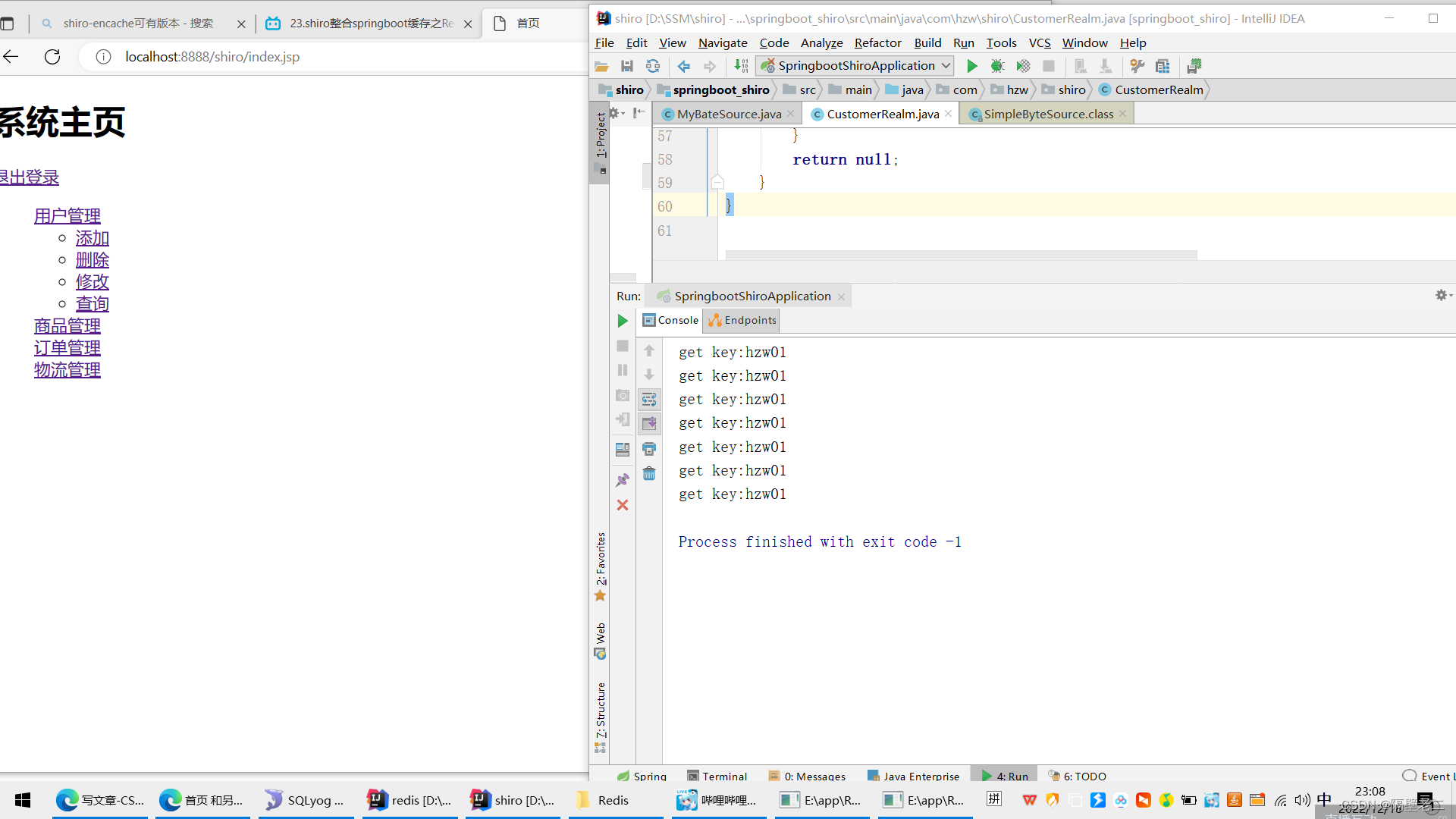 7.Shiro整合springboot之thymeleaf权限控制
7.Shiro整合springboot之thymeleaf权限控制
1.引入扩展依赖
